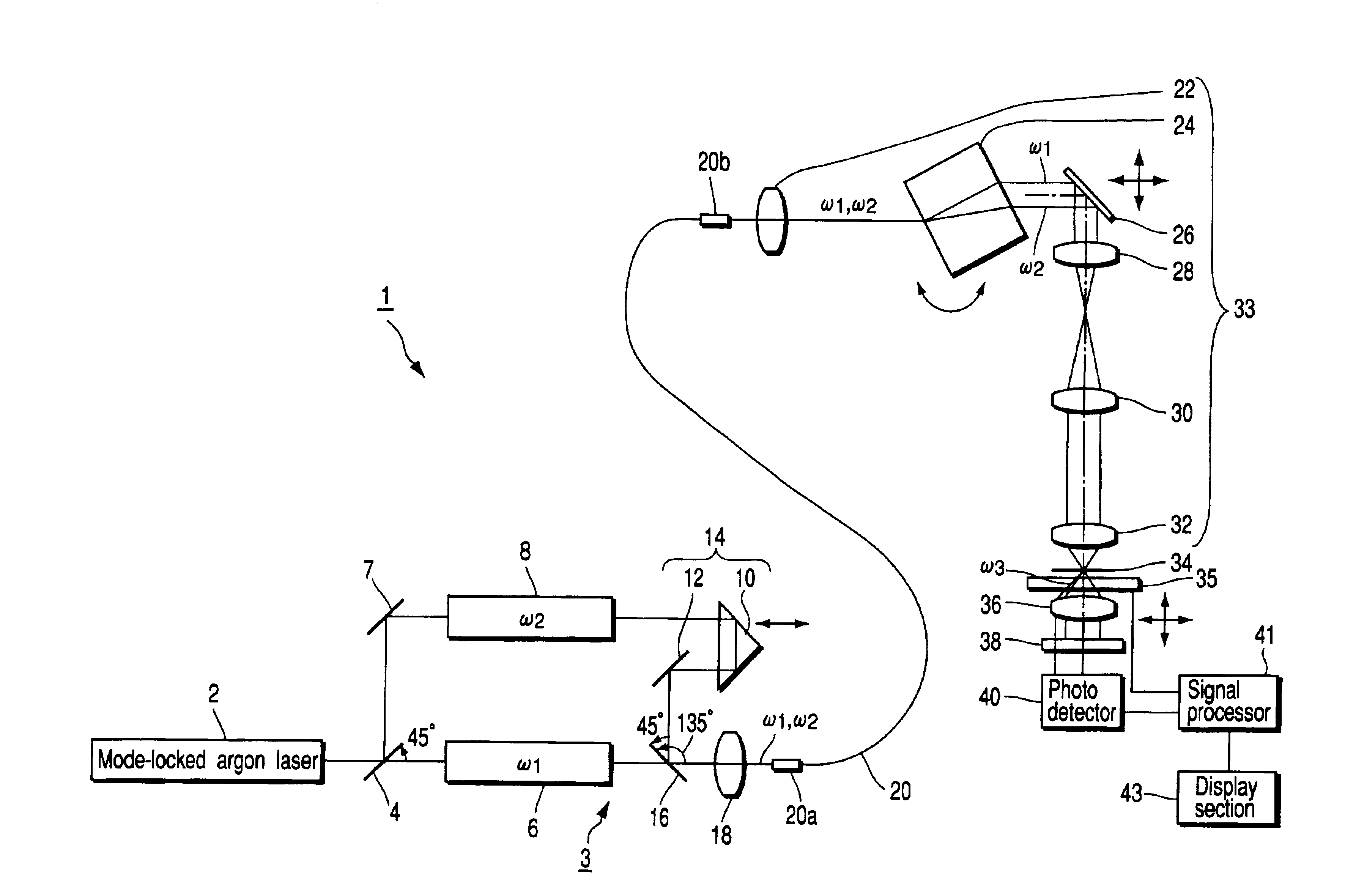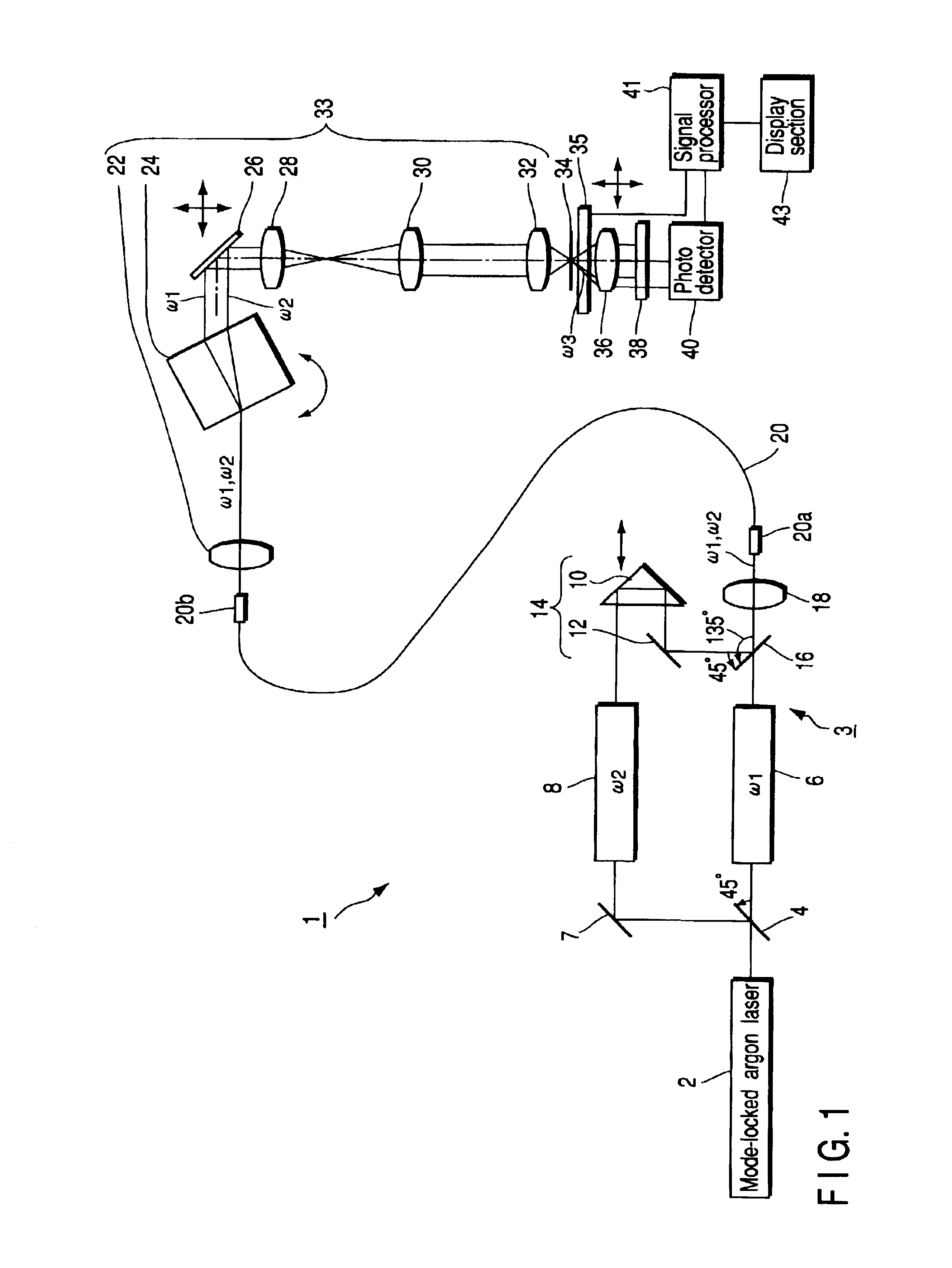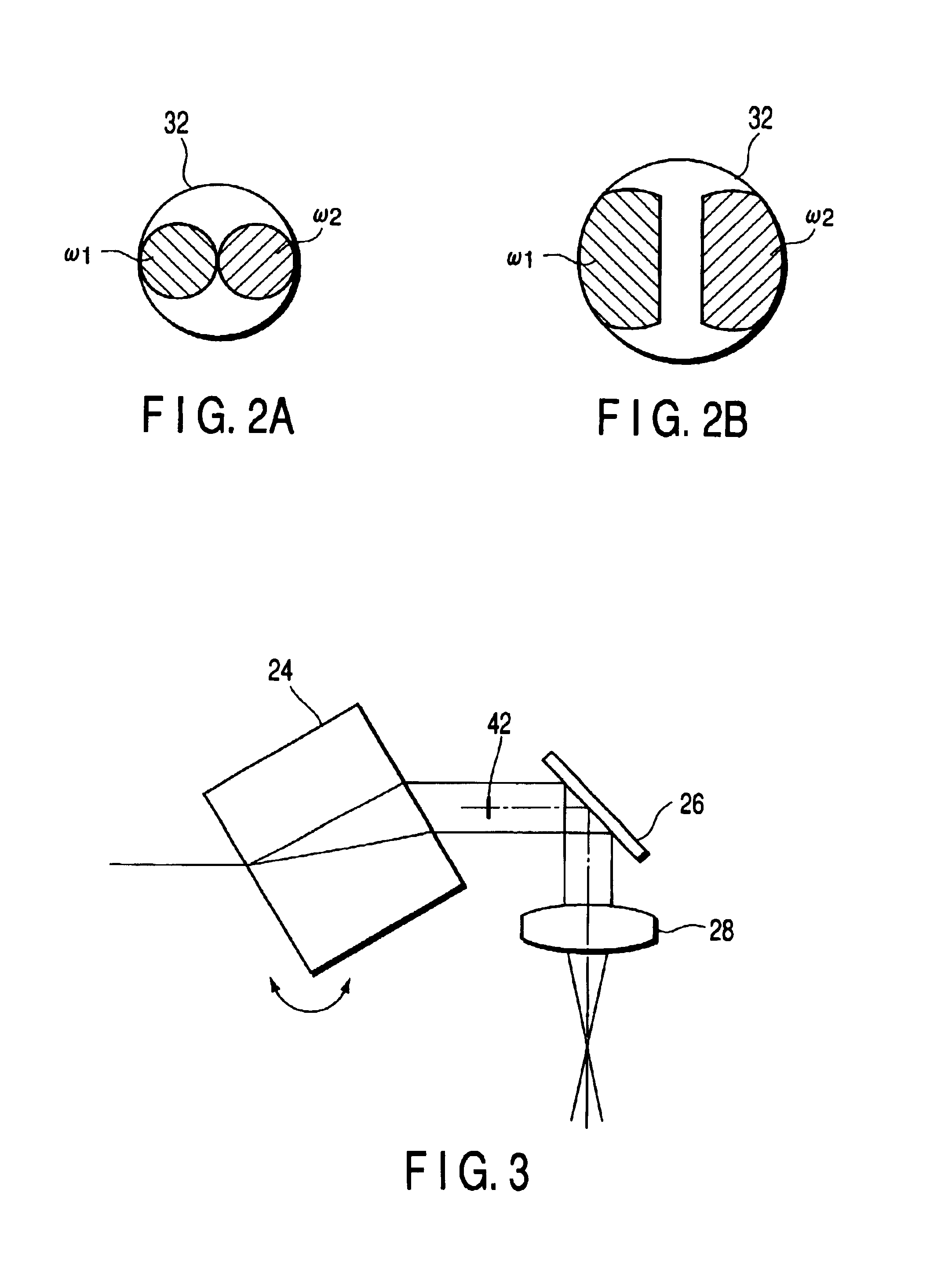Laser microscope
a laser microscope and microscope technology, applied in the field of laser microscopes, can solve the problems of difficult removal of the possibility of optical axes misalignment, misalignment, and misalignment, and achieve the effect of suppressing the generation of misalignmen
- Summary
- Abstract
- Description
- Claims
- Application Information
AI Technical Summary
Benefits of technology
Problems solved by technology
Method used
Image
Examples
first embodiment
[0037]First, the invention will be described by using FIGS. 1 through 3.
[0038]As shown in FIG. 1, a laser microscope 1 is provided with, as a laser light emitting system 3, a mode-locked argon laser (a laser light source) 2 which emits a laser beam in a predetermined direction from a light-emitting opening (not shown). A beam splitter 4 is disposed in front of the laser 2. The beam splitter 4 divides the incident laser beam into a transmitted beam and a reflected beam to be reflected in a direction perpendicular to the transmitted beam. A first dye laser 6, which emits a pump beam ω1 (wavelength of 570 nm), is disposed on an optical path of the transmitted beam.
[0039]On the other hand, a reflecting mirror 7 and a second dye laser 8 which emits a Stokes beam ω2 (whose wavelength is variable from 620 nm to 680 nm) are disposed on the optical path of the reflected beam.
[0040]Note that the first and second dye lasers 6, 8 are respectively pulse oscillated at the same repeating frequenci...
second embodiment
[0082]Here, in the second embodiment, the dispersion compensating optical system 58 which can provide a large negative dispersion is disposed on each optical path of the pump beam ω1 and the Stokes beam ω2, such that the beams ω1, ω2 emitted from the single mode fiber 20 are emitted at a pulse width of a picosecond level.
[0083]Further, as the amount of negative dispersion of the dispersion compensating optical system 58, a value offsetting the sum of the amounts of dispersion of the optical elements disposed on the respective optical paths is preferably selected.
[0084]However, in this embodiment, the total of the amounts of the dispersion from the condenser lens 18 to the collimator lens 22 and from the plane parallel body 24 to the objective lens 32 does not reach a value offsetting the dispersion of the dispersion compensating optical system 58. Therefore, the high-dispersion glass 60, which can provide a positive dispersion, such as, for example, SF10, is disposed on the optical ...
PUM
 Login to View More
Login to View More Abstract
Description
Claims
Application Information
 Login to View More
Login to View More - R&D
- Intellectual Property
- Life Sciences
- Materials
- Tech Scout
- Unparalleled Data Quality
- Higher Quality Content
- 60% Fewer Hallucinations
Browse by: Latest US Patents, China's latest patents, Technical Efficacy Thesaurus, Application Domain, Technology Topic, Popular Technical Reports.
© 2025 PatSnap. All rights reserved.Legal|Privacy policy|Modern Slavery Act Transparency Statement|Sitemap|About US| Contact US: help@patsnap.com



